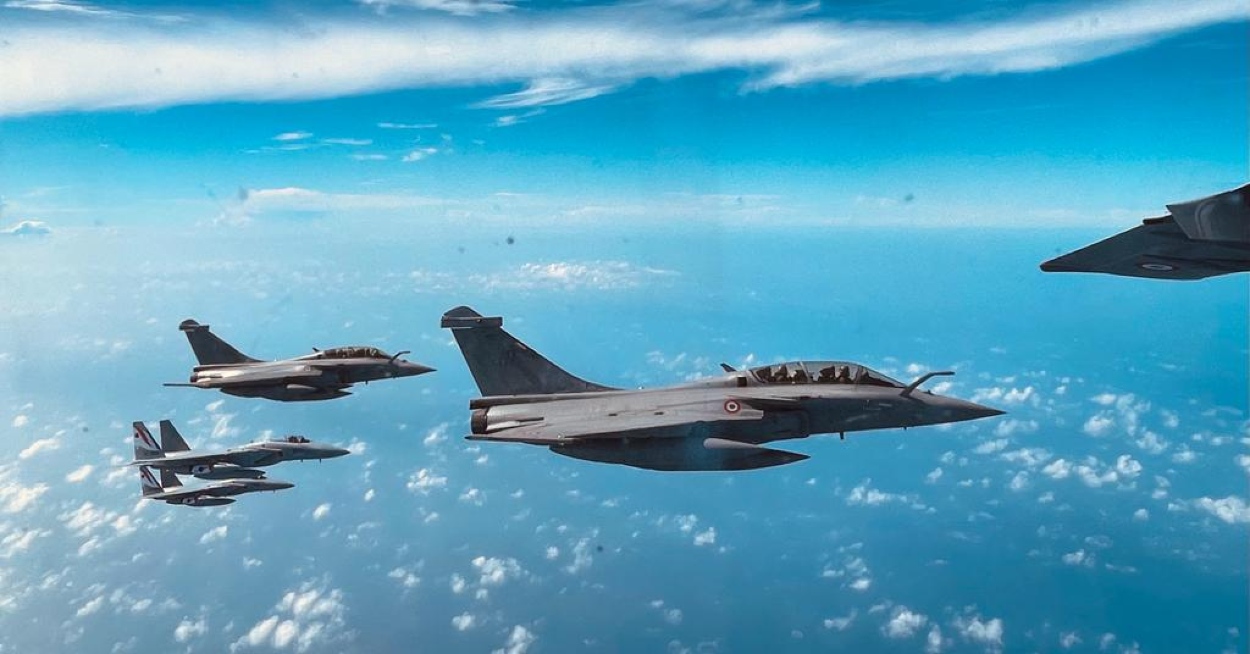The US government has authorized the potential sale of 50 long-range air-to-surface missiles, valued at nearly US$104 million, to equip Japan’s F-15 fighters and other aircraft types.
In an announcement made on August 28, the Defense Security Cooperation Agency revealed that they had informed Congress about the proposal concerning AGM-158B/B-2 Joint Air-to-Surface Standoff Missiles with Extended Range, commonly referred to as JASSM-ER, earlier the same day.
The agency noted that the Japanese government has expressed interest in acquiring up to 50 missiles.
Furthermore, the agency emphasized that the potential sale can boost the security of a major ally, which plays a crucial role in maintaining political stability and economic advancement in the Indo-Pacific region.
The prospective package additionally encompasses Global Positioning System receivers engineered to withstand jamming, supporting equipment, spare components, and various systems and services.

The agency said the missiles are intended to be installed on Japan’s Air Self-Defense Force F-15s and other fighter jets.
The DSCA highlighted, “The proposed sale will improve Japan’s capability to meet current and future threats by providing standoff capability via advanced, long-range strike systems for employment on Japan Air Self-Defense Force fighter aircraft including but not limited to the F-15J. Japan will have no difficulty absorbing these articles and services into its armed forces.”
The statement also clarified that implementing this plan will not alter the basic military balance in the region and will not negatively affect the readiness of US defense.
Lockheed Martin will serve as the primary contractor for this project, with no reported offset agreements linked to the potential sale.
The authorization of the JASSM-ER sale can be interpreted as a vital requirement for the Japanese military, given the escalating regional tensions in the backdrop of the rivalry between the United States and China.
In response to significant security threats from China and North Korea, the Japanese government made revisions to its central defense documents in late 2022.
These updates included a commitment to obtain counterstrike, or enemy base strike, capabilities – a substantial policy change under Japan’s pacifist Constitution.
Japan has intensified its endeavors to acquire and advance long-range missile technology as part of this initiative.
What Makes Acquisition Of JASSM-ER Missile Vital For Japan?
JASSM-ER, an extended-range iteration of JASSM, stands out as a 2,250-pound cruise missile featuring a 1,000-pound penetrator and a blast-fragmentation warhead.
Employing precision routing and guidance mechanisms, it effectively operates in challenging weather conditions, regardless of the time of day. It uses an infrared seeker alongside anti-jam GPS capabilities to pinpoint a precise target destination.
With a range spanning around 1000 kilometers, the AGM-158B Joint Air-to-Surface Standoff Missile Extended Range (JASSM-ER) will provide Japanese Air Force fighter jets the capability to engage targets while remaining beyond the operational reach of adversary air defenses during missile launches.
Tokyo plans to integrate these air-launched missiles with its F-15 fighter jets, endowing them with the capability to engage heavily fortified, high-value targets.
The EurAsian Times previously reported that Tokyo is currently in the initial phases of upgrading its F-15Js as part of the ‘Japanese Super Interceptor’ program.

This modernization initiative includes equipping 70 single-seat fighters with advanced electronic warfare capabilities, a modernized radar system, the capacity to carry additional air-to-air missiles, an upgraded central computer, and the ability to deploy long-range standoff missiles.
However, the potential deployment of JASSM-ER could extend beyond F-15s. It is plausible that Japan’s existing fleet of F-35As, along with the F-35Bs designed for short take-offs and vertical landings, set to operate from upgraded JS Izumo and JS Kaga vessels, might be equipped with these missiles.
Another intriguing avenue involves the Kawasaki C-2 transport aircraft. Recent reports suggest that the Japanese Ministry of Defense is contemplating using Kawasaki C-2 tactical transport aircraft to launch JASSM-ERs mounted on pallets through the aircraft’s cargo ramp.
The Japanese Ministry of Defense envisions the C-2 potentially conducting standoff strikes against high-value targets like military bases and missile launch sites.
Meanwhile, the missile acquisition coincides with the United States’ efforts to enhance the military capacities of its allies and partners in the Indo-Pacific area.
In 2022, the US sanctioned a deal for the Government of Australia to acquire Joint Air-to-Surface Standoff Missiles-Extended Range (JASSM-ER) and associated equipment at approximately $235 million.
Overall, these developments align with the US strategy of arming regional allies as a response to the expanding influence of the Chinese military.
Thus, the possession of extended-range precision strike capabilities elevates Japan’s strategic deterrence capabilities, enabling the nation to target valuable assets of potential adversaries effectively.
In a scenario where Japan encounters a powerful adversary such as China, equipped with advanced anti-access/area denial (A2/AD) capabilities, the deployment of JASSM-ER could provide Japan the capability to engage critical targets, such as air defenses or naval assets, situated deep within the adversary’s territory. This strategic option minimizes the need to expose Japan’s assets to potential risks.
- Contact the author at ashishmichel(at)gmail.com
- Follow EurAsian Times on Google News




